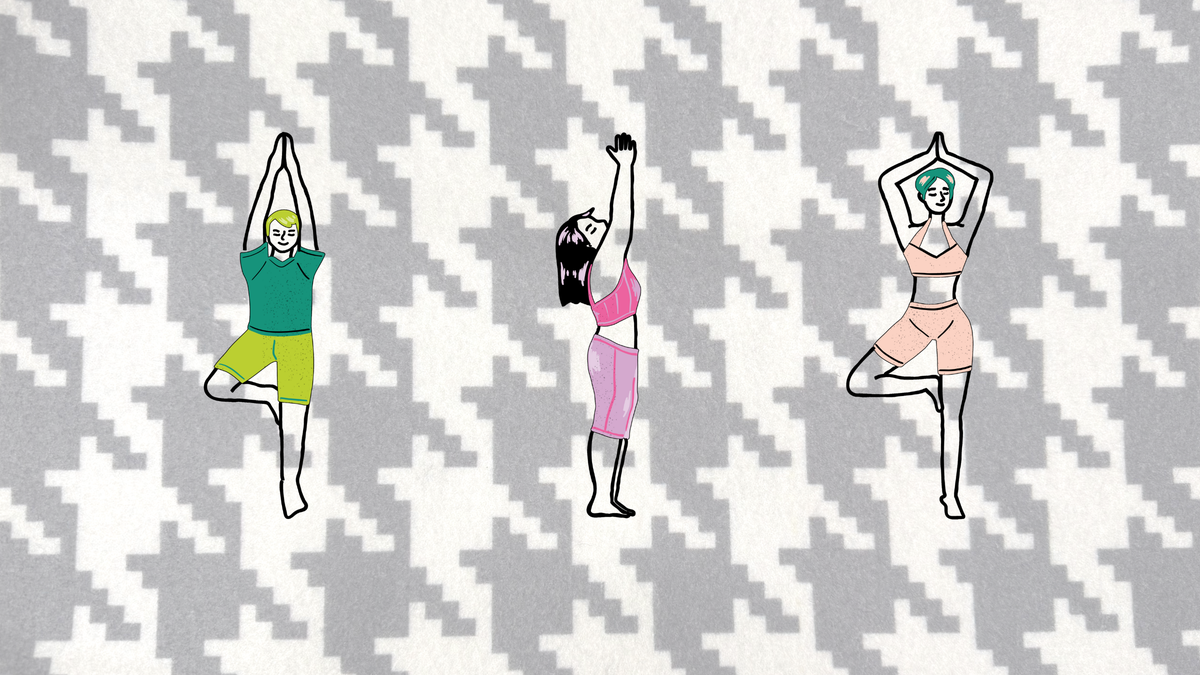
You may not notice it happening, but that rounded shoulder position you fall into during your commute or while answering emails is setting you up for achy shoulders, a tight neck, and a cranky lower back.
Hours of driving, typing, and scrolling through your phone cause the muscles in the front of your body, like your chest and hip flexors, to shorten and tighten, while your upper back and deep core muscles essentially go offline. Over time, your body begins to treat that rounded, forward-head position as its new normal.
“People often develop poor posture because some muscles become too tight while others get weak from habits like sitting too long, using phones or computers, or moving inefficiently,” says Joey Masri, a board-certified orthopedic physical therapist. “The body adapts to these positions, making slouching or uneven alignment feel normal even though it puts extra strain on joints and muscles.”
But with some intentional effort, you can reverse this pattern by opening what’s tight, strengthening what’s underactive, and practicing better alignment for just a few minutes each day.
Below are three moves Masri recommends to improve your posture. Perform them daily as a short circuit, moving through Wall Angels first, then the Doorway Pec Stretch, and finishing with Pelvic Tucks. The entire sequence takes about five minutes, says Masri, enough time to help you stand taller and move better without disrupting your day.
Over the next four to six weeks, you can make these exercises more challenging by slowing down the movements or holding positions longer to increase time under tension, Masri explains. Once you’ve mastered that, add a second round through the circuit if you have time.
1. Wall Angels
Wall angels re-educate the muscles of your upper back and shoulders that help set your shoulder blades down and back. They also gently open the chest, which tends to pull the shoulders forward. “Tension should be felt in the upper back muscles throughout,” Masri notes, emphasizing that this exercise strengthens the very muscles that keep you upright while stretching the tight chest muscles that contribute to slouching.
How to Do It:
- Stand or sit with your back, head, and arms against a wall in a goalpost position.
- Keep your ribs quiet and your chin level.
- Slowly slide your arms up and down the wall, maintaining as much contact with the wall as possible while keeping your elbows and the backs of your hands close to the wall.
- Move only as high as you can without shrugging your shoulders.
- Perform two sets of 10 reps with calm breathing.
2. Doorway Pec Stretch
Tight pectoral and front-of-shoulder tissues pull your shoulders into that rounded position you’re trying to avoid. Opening the front of your body helps your shoulders sit in better alignment with your spine. The key, according to Masri, is to “lean forward while bracing your mid-section” to ensure the stretch stays isolated to your front deltoids and pectorals, not your lower back.
How to Do It:
- Stand in a doorway and place your forearms on the frame, with your elbows bent at a 90-degree angle.
- Step one foot forward.
- Gently lean your body through the doorway until you feel a stretch across your chest and the front of your shoulders, keeping your head and neck neutral without lifting your chin.
- Hold for 30 seconds while taking deep breaths, then switch your stance.
- Complete three sets total, keeping your shoulder blades back and down throughout.
3. Pelvic Tucks
Pelvic control gives your spine a stable foundation. Think “belt buckle toward ribs,” when it comes to pelvic tucks, Masri suggests, as it’s a gentle motion that helps your pelvis find its proper position without aggressively crunching your abs or squeezing your glutes. “This helps align your spine properly, reduces lower back strain, and improves the foundation for good posture,” he says.
How to Do It:
- Lie on your back with knees bent and feet flat on the floor, hip-width apart.
- Gently flatten your lower back into the floor by tightening your core and tilting your pelvis so your tailbone lifts slightly.
- Hold for 5 seconds, then return to your natural curve with control.
- Keep the motion small and smooth, avoiding any chest lifting.
- Complete 10 reps daily, and consider practicing these while standing to help find neutral spine during daily activities.
Want more Outside health stories? Sign up for the Bodywork newsletter. Ready to push yourself? Enter MapMyRun’s You vs. the Year 2025 running challenge.
The post 3 Exercises to Help Correct Poor Posture, Approved By a Physical Therapist appeared first on Outside Online.














